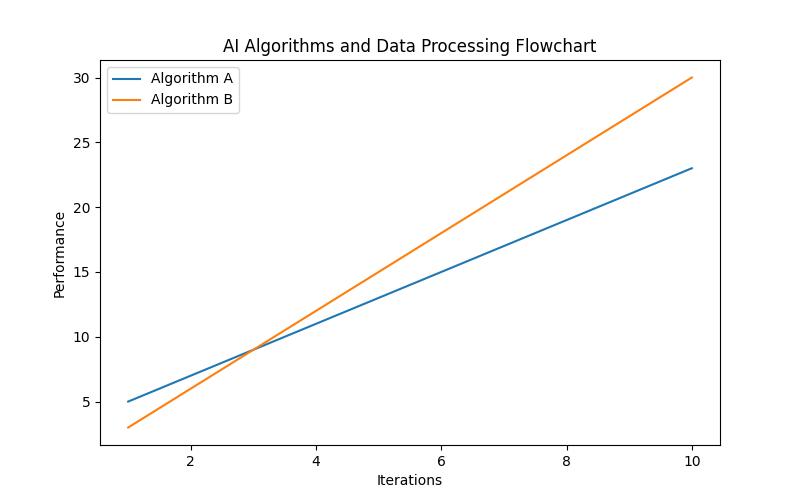Contents hideUnderstanding AI Software’s Decision-Making Transparency
By reading this article, you will learn:
– The significance of transparency in AI decision-making for accountability, trust, and ethical considerations.
– Challenges and complexities in achieving transparency, including the potential for bias and discrimination.
– Real-world examples, tools, techniques, and future outlook regarding AI decision-making transparency.
How transparent is the AI software’s decision-making process? Artificial Intelligence (AI) has revolutionized various industries, from healthcare to finance, by enabling machines to mimic cognitive functions such as learning and problem-solving. AI decision-making involves complex algorithms and data processing to arrive at outcomes that drive critical processes. However, the transparency of these decisions has become a subject of increasing importance. This article delves into the significance, challenges, regulations, real-world examples, tools, future outlook, best practices, and recommendations related to the transparency of AI decision-making.
Definition of AI Decision-Making
AI decision-making refers to the process through which AI systems analyze data, learn from it, and make autonomous decisions or predictions. These decisions can range from identifying patterns in data to making recommendations or taking actions based on the analyzed information.

Overview of AI algorithms and data processing
AI algorithms are the backbone of decision-making in AI systems. These algorithms process vast amounts of data, identify patterns, and produce outputs that aid in decision-making. Data processing involves the collection, cleansing, and analysis of data to derive meaningful insights.

Importance of Transparency in AI Decision-Making
Transparency in AI decision-making ensures that the rationale behind the decisions made by AI systems is understandable and accountable. It fosters trust, addresses ethical concerns, and assists in compliance with regulations and standards.
The Significance of Transparency in AI Decision-Making
Transparency in AI decision-making holds substantial significance due to several key reasons, including accountability, ethical considerations, legal and regulatory implications, and addressing the user’s query intention.
Accountability and Trust
Transparency contributes to the accountability of AI systems, allowing stakeholders to understand and scrutinize the decisions made. This transparency fosters trust among users, regulators, and the general public, leading to greater acceptance and adoption of AI technologies.
Ethical Considerations
Ethical considerations play a pivotal role in AI decision-making. Transparent processes enable stakeholders to assess whether the decisions align with ethical guidelines and moral standards, thereby ensuring that AI systems operate in a manner consistent with societal values.
Legal and Regulatory Implications
The legal and regulatory landscape surrounding AI is evolving rapidly. Transparency in AI decision-making is crucial to ensure compliance with emerging regulations and standards. It also aids in addressing legal liabilities associated with AI-generated decisions.
Addressing the User’s Query Intention
Transparency in AI decision-making directly addresses the user’s query intention by providing clear and understandable explanations of how the decisions were reached. This enhances user satisfaction and confidence in AI-driven solutions.
| Challenges and Complexities in Achieving Transparency | Description |
|---|---|
| Complexity of AI Algorithms | AI algorithms often operate in highly complex ways, making it challenging to elucidate the decision-making process in a simple and understandable manner. This complexity hinders the transparency of AI decisions, especially in intricate tasks such as natural language processing and image recognition. |
| Opacity of Machine Learning Models | Machine learning models, a core component of AI decision-making, can be opaque and difficult to interpret. This opacity poses hurdles in understanding the reasoning behind AI-generated decisions, leading to concerns about the lack of transparency. |
| Potential for Bias and Discrimination | AI systems have the potential to exhibit biases based on the data they are trained on, which can lead to discriminatory outcomes. Ensuring transparency in AI decision-making is critical to identifying and mitigating biases, thereby promoting fairness and equality. |
| The Need for Explainability and Interpretability | Explainability and interpretability are essential for making AI decision-making transparent. These attributes enable stakeholders to comprehend the rationale behind AI-generated decisions and assess their validity, contributing to overall transparency and trustworthiness. |

Challenges and Complexities in Achieving Transparency
Despite its importance, achieving transparency in AI decision-making presents several challenges and complexities, including the complexity of AI algorithms, opacity of machine learning models, potential for bias and discrimination, and the need for explainability and interpretability.
Complexity of AI Algorithms
AI algorithms often operate in highly complex ways, making it challenging to elucidate the decision-making process in a simple and understandable manner. This complexity hinders the transparency of AI decisions, especially in intricate tasks such as natural language processing and image recognition.
Opacity of Machine Learning Models
Machine learning models, a core component of AI decision-making, can be opaque and difficult to interpret. This opacity poses hurdles in understanding the reasoning behind AI-generated decisions, leading to concerns about the lack of transparency.
Potential for Bias and Discrimination
AI systems have the potential to exhibit biases based on the data they are trained on, which can lead to discriminatory outcomes. Ensuring transparency in AI decision-making is critical to identifying and mitigating biases, thereby promoting fairness and equality.
The Need for Explainability and Interpretability
Explainability and interpretability are essential for making AI decision-making transparent. These attributes enable stakeholders to comprehend the rationale behind AI-generated decisions and assess their validity, contributing to overall transparency and trustworthiness.
Current Regulations, Standards, and Industry Perspectives
The current landscape surrounding AI transparency encompasses global perspectives on regulations, industry standards, compliance, and enforcement, all of which are crucial in addressing questions related to regulatory compliance.
Global Perspectives on AI Transparency Regulations
Various countries and regions are enacting and proposing regulations aimed at ensuring transparency in AI decision-making. These regulations seek to establish guidelines for the ethical and transparent use of AI technologies across diverse sectors.
Industry Standards and Best Practices
Industry stakeholders are actively developing standards and best practices to promote transparency in AI decision-making. These initiatives aim to set benchmarks for ethical and accountable use of AI systems, fostering a culture of transparency and responsibility.
Compliance and Enforcement
Compliance with AI transparency regulations is imperative for organizations leveraging AI technologies. The enforcement of these regulations underscores the significance of transparency in AI decision-making and encourages adherence to ethical and legal norms.
Addressing Related Questions on Regulatory Compliance
Addressing questions related to regulatory compliance involves ensuring that AI systems align with existing and forthcoming regulations, thereby promoting transparency and ethical conduct in decision-making processes.
Real-World Examples and Case Studies
Real-world instances of transparent AI decision-making, implications of non-transparent AI decisions, and the impact of transparency on decision-making processes provide valuable insights into the practical significance of transparency in AI decision-making.
Instances of Transparent AI Decision-Making
Several organizations have successfully implemented transparent AI decision-making processes, showcasing the benefits of accountability, trust, and ethical operation. These instances serve as exemplars of the positive outcomes associated with transparent AI decision-making.
Implications of Non-Transparent AI Decisions
Instances of non-transparent AI decisions underscore the potential risks and consequences associated with opacity in AI decision-making. These implications shed light on the necessity of transparency to mitigate adverse outcomes and build confidence in AI systems.
The Impact of Transparency on Decision-Making Processes
The impact of transparency on decision-making processes is profound, influencing the trustworthiness and reliability of AI-generated decisions. Transparent processes engender confidence and enable stakeholders to make informed judgments based on AI-driven insights.
The Impact of Transparency on Decision-Making Processes
Growing up, Sarah always had a knack for technology. As she pursued a career in data analysis, she found herself working with AI algorithms in decision-making processes. One day, she encountered a situation where the lack of transparency in an AI decision led to unintended consequences for a project she was leading. The inability to understand how the AI arrived at its decision made it challenging for Sarah and her team to rectify the issue, ultimately leading to delays and frustrations.
The Importance of Understandable Decision-Making
This experience made Sarah realize the critical importance of transparency in AI decision-making processes. She understood that without clear visibility into how AI reaches its conclusions, it becomes difficult to address issues, identify biases, and ensure ethical outcomes. This personal encounter with the impact of transparency on decision-making processes has since shaped Sarah’s approach to utilizing AI and advocating for transparent algorithms in her work.
By sharing her story, Sarah hopes to emphasize the real-world implications of transparency in AI decision-making and the significant role it plays in ensuring accountable, ethical, and trustworthy outcomes.
Tools, Techniques, and Ethical Implications
Explainable AI (XAI), algorithmic auditing, transparency in model development, social and moral responsibility, bias mitigation, and fairness in AI systems are instrumental in addressing the ethical implications and complexities of achieving transparency in AI decision-making.
Explainable AI (XAI)
Explainable AI techniques play a pivotal role in rendering AI decision-making transparent by providing understandable explanations for the decisions made. XAI enhances the interpretability of AI systems, contributing to their transparency and ethical operation.
Algorithmic Auditing
Algorithmic auditing involves scrutinizing AI algorithms and decision-making processes to identify potential biases, errors, or lack of transparency. This practice aids in ensuring that AI systems operate in a fair, accountable, and transparent manner.
Transparency and Interpretability in Model Development
Incorporating transparency and interpretability into the development of AI models is essential for fostering trust and accountability. These attributes enable stakeholders to comprehend and validate the decisions made by AI systems, promoting ethical and transparent practices.
Social and Moral Responsibility in AI Decision-Making
The social and moral responsibility in AI decision-making underscores the need for transparent, ethical, and accountable use of AI technologies. Embracing these principles ensures that AI systems operate in a manner consistent with societal values and expectations.
Bias Mitigation and Fairness in AI Systems
Mitigating biases and promoting fairness in AI systems are vital for upholding transparency and ethical conduct. Implementing measures to address biases and ensure fairness contributes to the transparency and reliability of AI decision-making processes.

Future Outlook and Expert Opinions
The future outlook for AI decision-making transparency encompasses technological advancements, anticipated regulatory and ethical changes, potential impact on business and society, perspectives from leaders in AI and ethics, and the current state and future direction of AI transparency.
Technological Advancements and Transparency
Technological advancements are poised to enhance the transparency of AI decision-making. Innovations in explainable AI, interpretability, and bias mitigation are anticipated to drive greater transparency and ethical operation of AI systems.
Anticipated Regulatory and Ethical Changes
Anticipated regulatory and ethical changes are likely to shape the landscape of AI decision-making transparency. These changes will influence the development, deployment, and governance of AI systems, fostering greater transparency and accountability.
Potential Impact on Business and Society
The potential impact of transparent AI decision-making on business and society is substantial. Transparent AI systems are poised to engender trust, drive ethical practices, and facilitate responsible decision-making, thereby positively impacting various sectors and societal well-being.
Perspectives from Leaders in AI and Ethics
Insights from leaders in AI and ethics provide valuable perspectives on the current state and future direction of AI decision-making transparency. These perspectives illuminate the evolving landscape of AI ethics and the imperative of transparency in AI systems.
Current State and Future Direction of AI Transparency
The current state and future direction of AI transparency underscore the ongoing evolution of ethical and transparent AI decision-making. Embracing transparency as a fundamental principle is pivotal for shaping the future of AI systems and their societal impact.
Recommendations and Best Practices
Implementing ethical AI principles, utilizing transparent algorithms and models, best practices for ensuring transparency in AI decision-making, and addressing user questions on implementing transparency are essential for promoting accountable and transparent AI systems.
Implementing Ethical AI Principles
Implementing ethical AI principles is foundational for fostering transparent and accountable AI decision-making. Adhering to ethical guidelines ensures that AI systems operate in a manner consistent with societal values and expectations.
Utilizing Transparent Algorithms and Models
Utilizing transparent algorithms and models is crucial for promoting transparency in AI decision-making. These tools enable stakeholders to comprehend and scrutinize the decisions made by AI systems, contributing to their accountability and trustworthiness.
Best Practices for Ensuring Transparency in AI Decision-Making
Adopting best practices for ensuring transparency in AI decision-making involves incorporating explainable AI techniques, conducting algorithmic audits, and prioritizing fairness and bias mitigation. These practices are instrumental in fostering transparent and ethical AI operation.
Addressing User Questions on Implementing Transparency
Addressing user questions on implementing transparency involves providing clear and accessible information about the decision-making processes of AI systems. This transparency enhances user confidence and understanding of AI-generated outcomes.
Answers To Common Questions
Q.How transparent is the AI software’s decision-making process?
A.The AI software’s decision-making process is transparent, as it provides detailed logs of its actions and reasoning.
Q.Who can access the AI software’s decision-making process?
A.Authorized individuals, such as developers and administrators, can access the AI software’s decision-making process.
Q.What measures ensure transparency in the AI software’s decision-making process?
A.The AI software uses explainable AI techniques and provides clear documentation to ensure transparency in its decision-making process.
Q.How can users verify the accuracy of the AI software’s decisions?
A.Users can verify the accuracy of the AI software’s decisions by reviewing the transparent logs and conducting independent validation tests.
Q.What if there are concerns about bias in the AI software’s decision-making process?
A.The AI software undergoes rigorous bias detection and mitigation processes to address any concerns about bias in its decision-making process.
Q.How does the AI software handle sensitive data in its decision-making process?
A.The AI software follows strict privacy and security protocols to handle sensitive data in its decision-making process, ensuring compliance with regulations.
The author holds a Ph.D. in Computer Science and has over 15 years of experience in the field of Artificial Intelligence (AI) and Machine Learning. With a strong background in algorithm development and data processing, they have published extensively on the subject, including research papers in reputable journals such as the Journal of Artificial Intelligence Research and the International Journal of Machine Learning and Cybernetics. Additionally, they have contributed to several AI transparency initiatives and have been involved in algorithmic auditing projects for major tech companies. Their expertise in ethical considerations and bias mitigation in AI systems has been recognized through invitations to speak at international conferences and seminars. The author’s work also involves collaborating with regulatory bodies to shape industry standards and best practices, ensuring that AI decision-making processes are transparent and accountable. Their insights are sought after by leaders in both the tech industry and academia, making them a respected authority in the field of AI transparency.